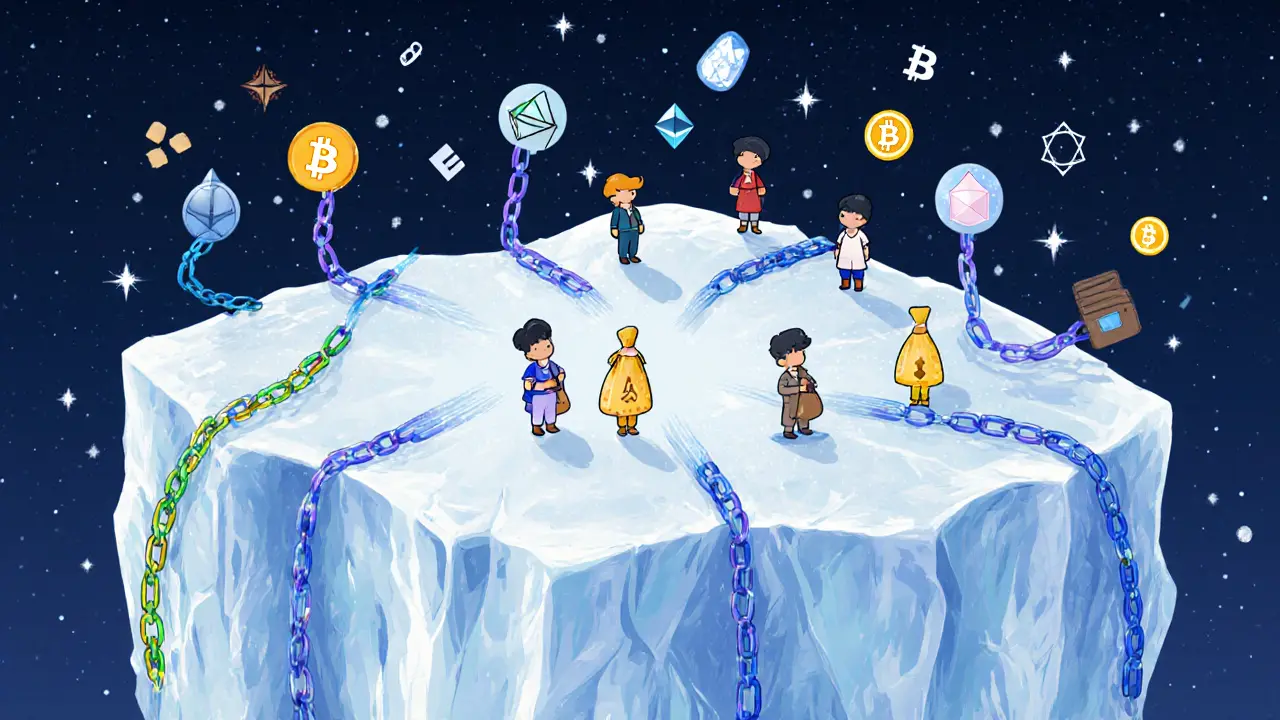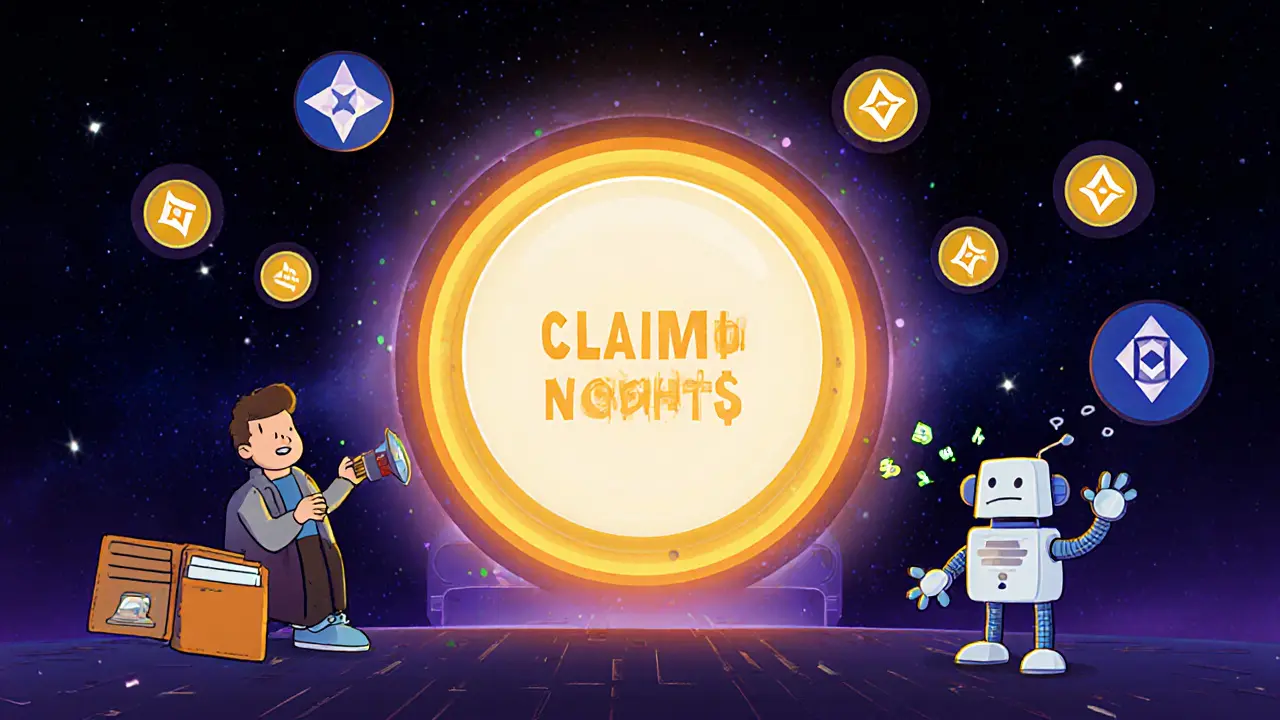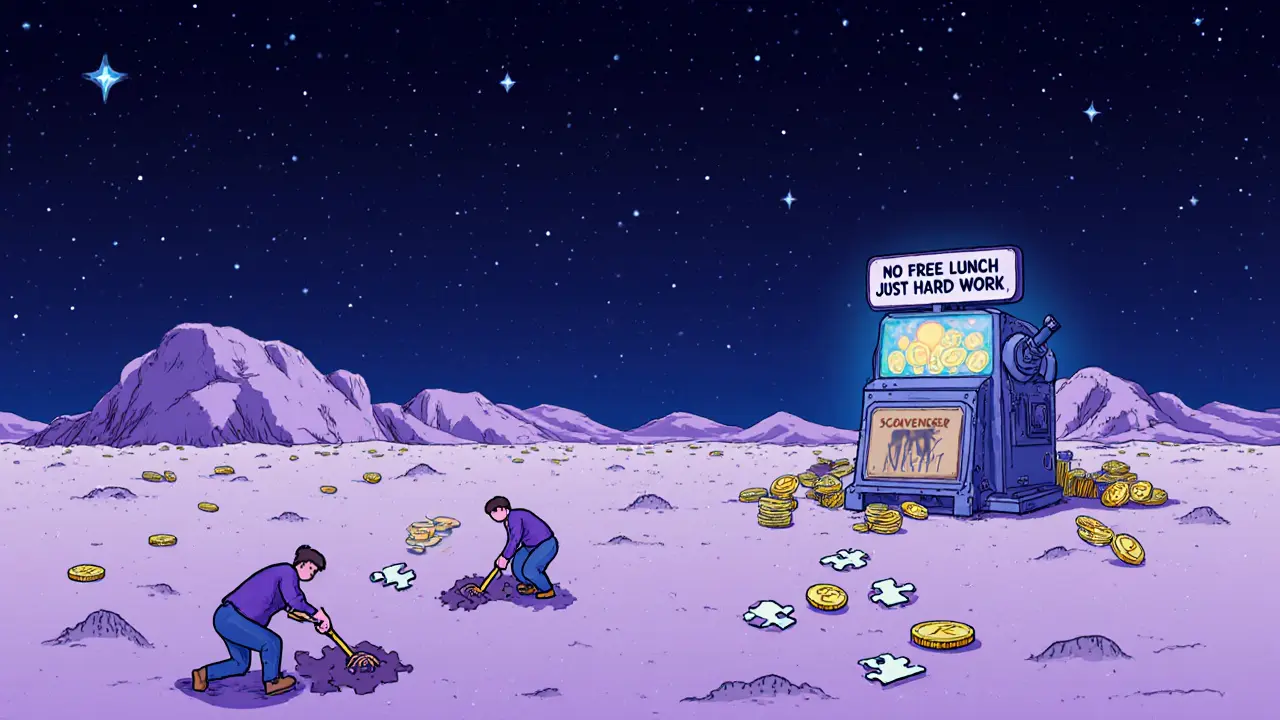
- 1 Nov 2025
- Elara Crowthorne
- 1
Midnight Airdrop Eligibility Calculator
Calculate your potential NIGHT token eligibility based on the Glacier Drop rules. Note: The claiming window closed on October 4, 2025, but this tool helps understand your eligibility based on the distribution rules.
Your Potential NIGHT Tokens
What Was the Midnight (NIGHT) Airdrop?
The Midnight (NIGHT) airdrop, also called the Glacier Drop, was one of the largest and most complex cryptocurrency distributions in 2025. It gave away 24 billion NIGHT tokens - the entire initial supply - to holders of crypto assets across eight major blockchains. The goal wasn’t just to hand out free tokens. It was to build a real, decentralized privacy network from the ground up, starting with real people who already used crypto.
Midnight Network isn’t just another blockchain. It’s a privacy-focused sidechain built on Cardano. It solves a big problem: most blockchains force you to choose between being transparent (like Bitcoin) or private (like Monero). Midnight says you shouldn’t have to pick. You should be able to use apps that are both useful and private - without giving up control or breaking the law.
The airdrop ran from August 6 to October 4, 2025. That window is now closed. If you didn’t claim your tokens by October 4, you missed the first chance. But don’t panic - there are still ways to earn NIGHT tokens later.
Who Was Eligible for the Glacier Drop?
You didn’t need to be a Cardano expert. You didn’t need to follow social media accounts or complete tasks. All you needed was to hold at least $100 worth of any supported cryptocurrency in your own wallet on June 11, 2025.
The snapshot happened at a random, undisclosed time that day to stop people from buying crypto right before the cutoff. It looked at wallets on these eight chains:
- Bitcoin (BTC)
- Ethereum (ETH)
- Ripple (XRP)
- Solana (SOL)
- Avalanche (AVAX)
- BNB Chain (BNB)
- Brave (BAT)
- Cardano (ADA)
If you had $100 or more in any of these, you qualified. You didn’t need to hold all of them - just one. And if you held crypto on multiple chains, you could claim from each one. Someone with $150 in BTC and $200 in ADA could get two separate allocations.
But here’s the catch: your crypto had to be in a self-custody wallet. If your Bitcoin or Cardano was sitting on Binance, Coinbase, or Kraken, you were out of luck - unless your exchange decided to claim for you. And almost none did. That’s because exchanges don’t want the legal risk or the technical headache of handling airdrops for millions of users.
How Were Tokens Distributed?
The 24 billion NIGHT tokens weren’t split evenly. The allocation was weighted to reward the Cardano community most - because Midnight is built on Cardano.
Here’s how it broke down:
- 50% (12 billion tokens) - Reserved for Cardano (ADA) holders
- 20% (4.8 billion tokens) - For Bitcoin (BTC) holders
- 30% (7.2 billion tokens) - Shared among Ethereum, XRP, Solana, Avalanche, BNB Chain, and BAT holders
The 30% was divided proportionally. So if you held $500 in ETH and $100 in SOL, you’d get a larger share of that 30% than someone with just $100 in SOL.
The $100 minimum kept out bot accounts and spam wallets. It wasn’t meant to be a huge barrier - just enough to make sure real people were getting the tokens, not machines.
How Did You Claim Your NIGHT Tokens?
Claiming wasn’t simple. It required two cryptographic proofs - and you had to use a Cardano wallet.
Here’s what you had to do:
- Go to the official claim portal: midnight.gd or midnight.network
- Connect your wallet from the chain you qualified on (like MetaMask for Ethereum or Eternl for Cardano)
- Sign a message proving you owned the wallet - without moving any funds
- Provide a new, unused Cardano wallet address to receive the NIGHT tokens
That last step was critical. Even if you held Bitcoin or Solana, you had to give them a Cardano address to get your tokens. That meant if you didn’t already have a Cardano wallet, you had to create one - and make sure it was brand new. Using an old Cardano wallet could get your claim rejected.
The portal supported these wallets:
- Eternl
- Lace
- Yoroi
- MetaMask
It wasn’t beginner-friendly. Many people got stuck on the signing step or didn’t realize they needed a fresh Cardano address. Community videos on YouTube helped a lot - step-by-step guides made the difference between claiming and losing out.

What Happens After You Claim?
Getting the tokens wasn’t the end. It was the beginning.
NIGHT tokens don’t unlock all at once. They’re locked in a Cardano smart contract and released slowly over 360 days - in four equal parts, every 90 days. But here’s the twist: the unlock dates are randomized. Midnight doesn’t tell you when each batch will be released. This is called "gradual thawing."
Why? To stop people from dumping their tokens right after claiming. In past airdrops, people got free tokens, sold them immediately, and the project collapsed. Midnight wanted users to stick around - to help run the network, vote on changes, and build apps.
The full unlock only starts after Midnight’s mainnet goes live. And no one knows when that will be. That means even if you claimed on August 10, you might not be able to sell your tokens until months later.
What If You Missed the Claim Window?
The Glacier Drop ended on October 4, 2025. If you didn’t claim by then, you didn’t get your tokens - not yet.
But Midnight didn’t just delete the unclaimed tokens. They moved them into the next phase: the Scavenger Mine.
In this phase, users solve public-good computational puzzles - like verifying transactions or helping secure the network. In return, they earn a share of the leftover NIGHT tokens. It’s not free money. You have to work for it. But it’s a fair way to give the tokens to people who actually help the network grow.
If any tokens are still left after the Scavenger Mine, they go into a third phase called Lost-and-Found. That’s the final chance for anyone who missed the first two phases. It opens after mainnet launch.
So if you didn’t claim during the Glacier Drop, you still have a shot - but you need to get involved. No more passive holding. You have to participate.
Why This Airdrop Was Different
Most airdrops are marketing stunts. Midnight’s was a technical and economic experiment.
Here’s what made it stand out:
- Cross-chain eligibility - Rarely do airdrops target eight blockchains at once. This wasn’t just about Cardano - it was about bringing in users from everywhere.
- No social tasks - You didn’t need to tweet, join Discord, or follow influencers. Eligibility was based purely on crypto holdings. That made it fairer.
- Extended vesting - Locking tokens for 360 days is unusual. Most airdrops give you full access immediately. Midnight wanted long-term commitment.
- Three-phase distribution - Glacier Drop, Scavenger Mine, Lost-and-Found - this structure ensures almost all tokens eventually reach real users, not speculators.
- Compliance-first - Midnight screened every address against OFAC’s sanctions list. It’s rare to see privacy projects care this much about legal compliance.
This wasn’t a giveaway. It was a recruitment drive for a new kind of blockchain - one where privacy isn’t a feature. It’s the foundation.

What Are NIGHT and DUST Tokens?
Midnight uses two tokens, and they do different jobs:
- NIGHT - The utility token. This is what you got in the airdrop. It’s used for governance, staking, and earning rewards. You can’t use it to pay for transactions.
- DUST - The fuel token. This pays for network fees - like sending a transaction or running a smart contract. You earn DUST by participating in the network, and you need it to use Midnight apps.
This dual-token system is smart. It separates value (NIGHT) from usage (DUST). That keeps the price of NIGHT stable and focused on long-term adoption, while DUST can fluctuate based on network demand.
What’s Next for Midnight?
The testnet is live. Developers are already building privacy apps on it - things like anonymous voting, private payments, and confidential data sharing.
The mainnet launch will trigger the first unlock of NIGHT tokens. But no one knows when that will happen. The team says they’re prioritizing security and stability over speed.
After mainnet, the Scavenger Mine will begin. That’s your next chance to earn NIGHT. If you’re serious about privacy on blockchain, this is where you get involved.
Final Thoughts
The Midnight airdrop was one of the most thoughtful token distributions ever. It didn’t try to trick people. It didn’t promise quick riches. It asked for something harder: time, participation, and belief in a better kind of blockchain.
If you claimed your tokens, you’re now part of a community building something rare: privacy that works with the real world, not against it.
If you missed it - don’t give up. The Scavenger Mine is waiting. And this time, you’ll know what to do.

1 Comments